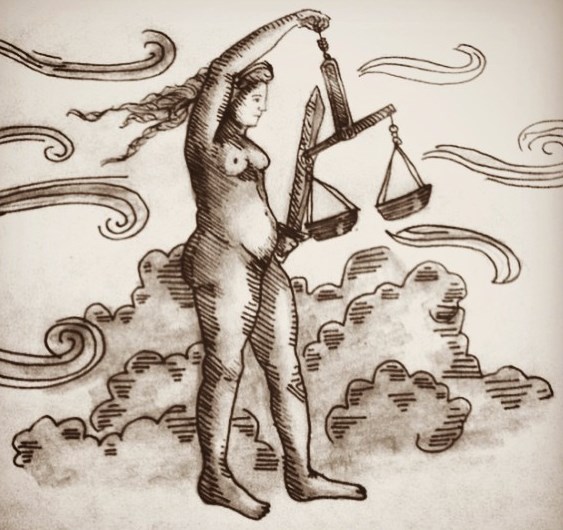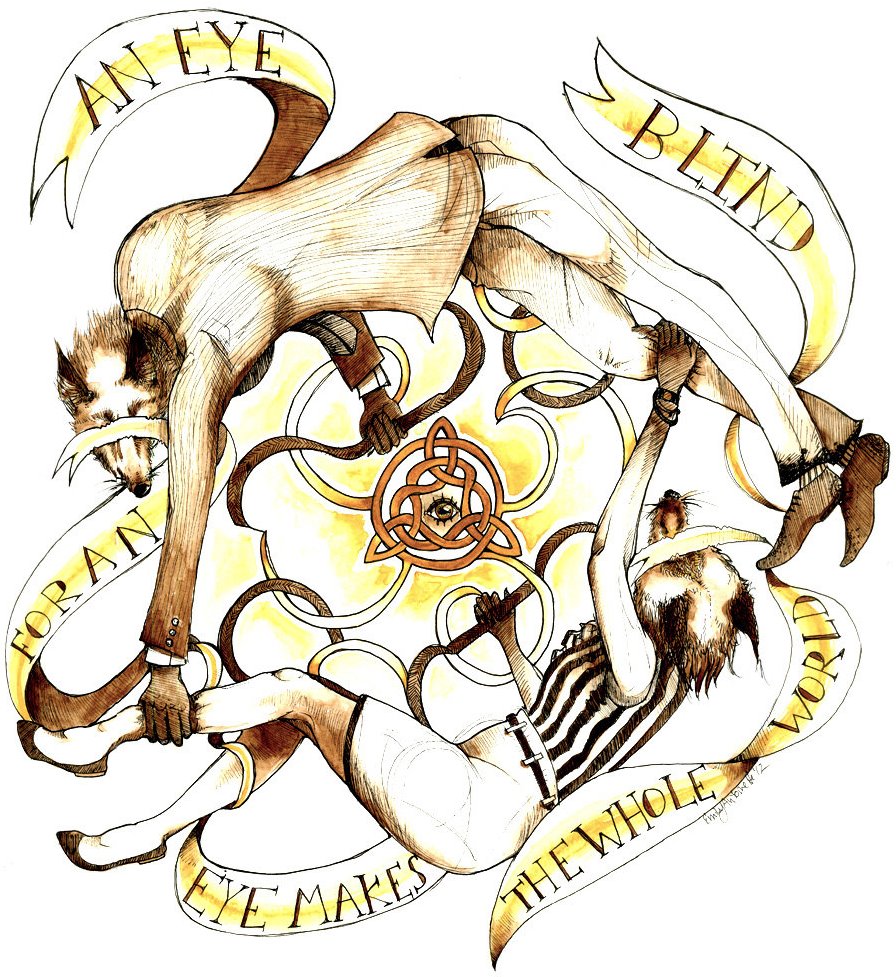Semantic musings ahead. Scroll onward at your own peril.

Law & Order detectives always want to “get justice for the victim”. Opponents of police brutality also call for justice, by name. No one opposes justice, as far as I know. And yet… what is it, exactly? An eye for an eye? Moral concepts can be so slippery. I can’t get a handle on justice.
The Macmillan Dictionary defines the word as “the fact that something is reasonable and fair” or “treatment of people that is fair and morally right”. To make sense of these definitions, you have to define “reasonable”, “fair”, and “morally right”. Those words are difficult to pin down, to but I define them like this, respectively:
- justifiable with logic; intuitively acceptable
- sameness of treatment and condition
- justifiable given a certain paradigm

Truism: life ain’t fair. Therefore… justice is an infrequent occurrence? (Hence the first illustration, in which Lady Justice walks naked through the wind, brandishing her scales and sword.) Most often the way I hear justice used tallies with “retribution”, but isn’t justice supposed to be a more noble concept?


